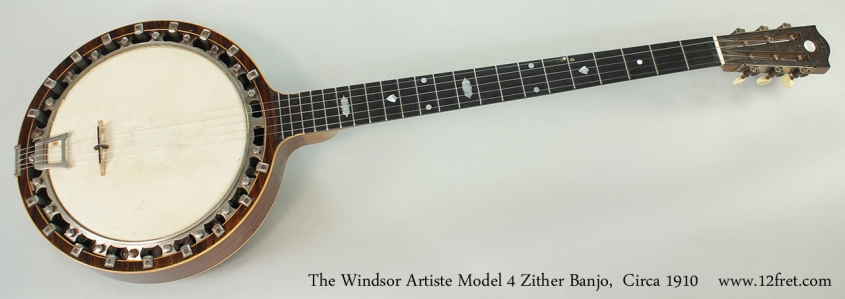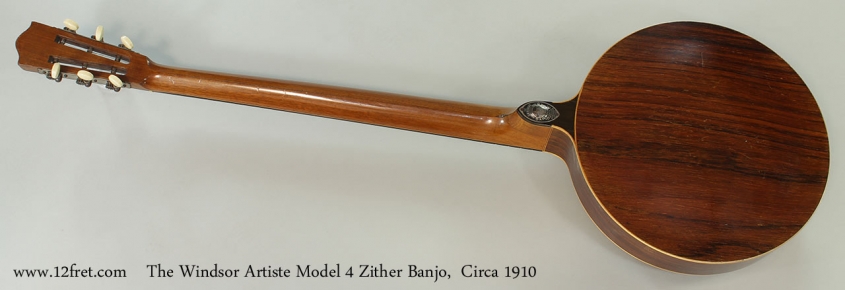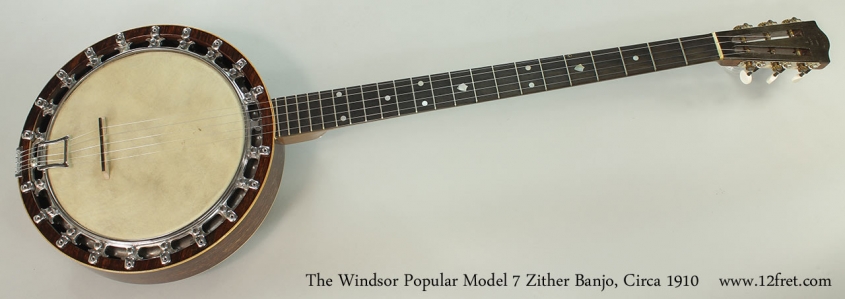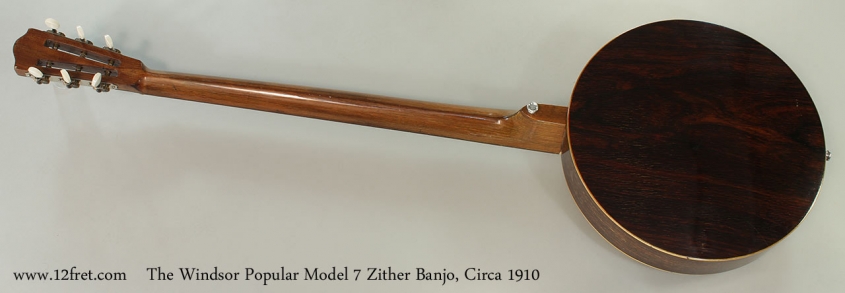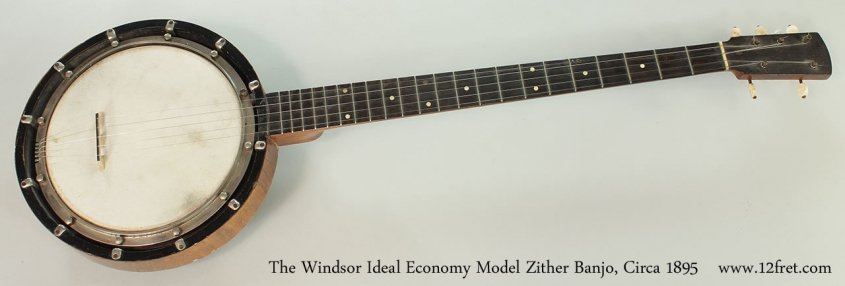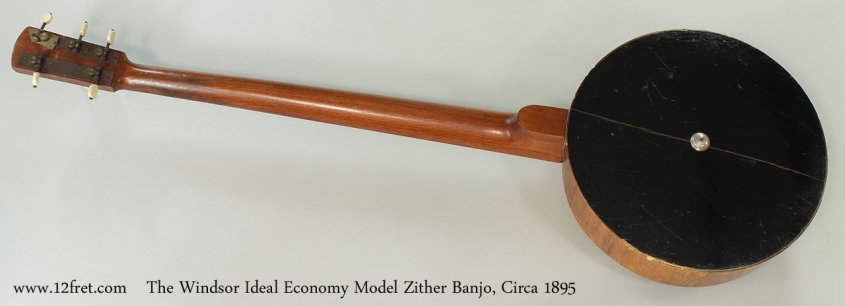The Windsor Zither Banjo
From 1887 until the Birmingham factory was destroyed in 1940 in a German air-raid, the Castle Works Windsor company was the largest maker of fretted instruments in British history.
By 1887, Arthur Octavius Windsor had a small factory building Coffins and fabricating metal hardware. His off-time was spent pursuing his passion for banjos which he soon applied by opening a new factory, eventually employing 25 makers to build his ever expanding line of banjos and other fretted instruments.
He pioneered a style of wooden pot construction which he called Zither Construction. The metal rim, head and tension hoop assembly drops into this pot and the tailpiece was neatly inlayed into the wooden pot. A typical Windsor feature is the 5th string tunnel which eliminates the 5th string tuner on the neck typical of most banjos. Most Windsor banjos have 6 tuners: three per side though only 5 of those tuners are used — the 6th acting as a spare in the event of breakage.
A.O. Windsor was very skilled at self promotion and published a 50 page booklet on ‘How a Zither-Banjo Is Made’ in 1896 which secured Windsor instruments popularity as a Household name .
Unlike most banjo makers, Windsor fabricated all of their hardware fittings in their own workshop; all were non-standard insuring that customers would buy replacement fittings only from A.O. Windsor. He registered numerous patents on his developments.
These so-called English Banjos are almost always Windsor-built and they were quite popular in Canada. We see them routinely for service and restoration in our workshop.
The calfskin head diameter ranges from 8 inch to 9 inch on Windsor banjos so they are not ‘big’ sounding. I find them perfect for quiet home playing – clawhammer or fingerstyle.
Workmanship is very good and the quality of the metal castings and machine work is a delight. They have slender necks with a V profile; no truss rod and are always slightly over-bowed by modern standards but I find they can easily be made playable well past the 12th fret position. They make an interesting historical addition to any collection.
I have setup these three banjos at 6/64 inch action with light gauge strings: ideal for a mix of clawhammer and fingerstyle. As with all our banjos, new or used, one year no-charge setup and service is included.
There are no cases with these banjos. Generally, open back gig bags work best with Windsor banjos.
Grant MacNeill
The Windsor Artiste Model 4, Circa 1910
One of the top Windsor models, the Artiste model 4 zither banjo features a Walnut neck with inlaid Ebony fretboard moulded to the rosewood pot, trimmed in boxwood. The 8-3/4 inch Calfskin head would be the fullest sounding of the Windsor banjos of this period.
All hardware and finish is original.
Price: $849 SOLD
The Windsor Popular Model 7, Circa 1910
The Windsor Popular Model 7 zither banjo uses the same woods and hardware as the Artiste model, but with a square-shouldered, bolt-on neck to pot joint. Less elegant and less labour intensive construction technique and arguably more repairable as the neck and be easily removed and replaced.
Though Windsor described their pot hardware as chromium plated, my guess is that was a generic term and they were actually nickel plated. This one is very clean chrome plated and I suspect that it was replated sometime in the later 20th century. Similarly, the lacquer finish which has a lovely vintage patina shows some indications that it was redone decades ago. The tuners have been replaced with the Pre-war Chicago Musical Instrument strip tuners typical of late 1930s Gibsons.
Price: $699 SOLD
The Windsor Ideal Economy Model Zither Banjo, Circa 1895
Often sold through Eaton’s catalogues, the Windsor Ideal Economy models are very basic banjos, light as a feather and make the perfect late night noodler banjo. The walnut neck is fitted with an ebony veneer fretboard and the tuner buttons are carved bone. The 8-1/4 inch calfskin head drops into a Walnut veneered pot that shows plenty of honest wear and chips. Though worn the banjo is structurally sound and should be making music a century from now.
Price: $399 SOLD
Serial Number: Serial numbers are not available.
Pricing:
The Windsor Artiste Model 4, Circa 1910 Price: $849, without case SOLD
The Windsor Popular Model 7 Zither Banjo, Circa 1910 Price: $699 without case SOLD
The Windsor Ideal Economy Model Zither Banjo, Circa 1895 Price: $399 without case SOLD
Status: SOLD
